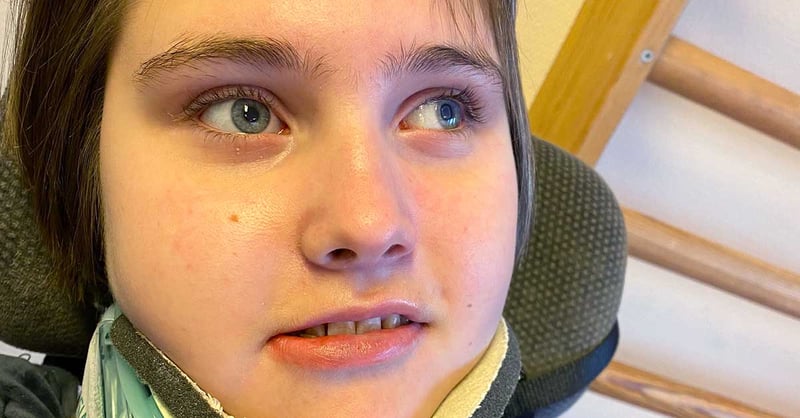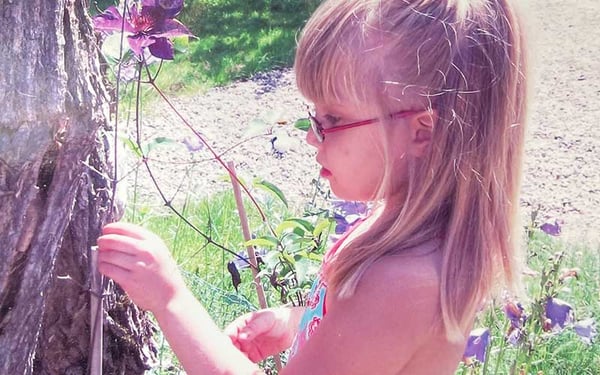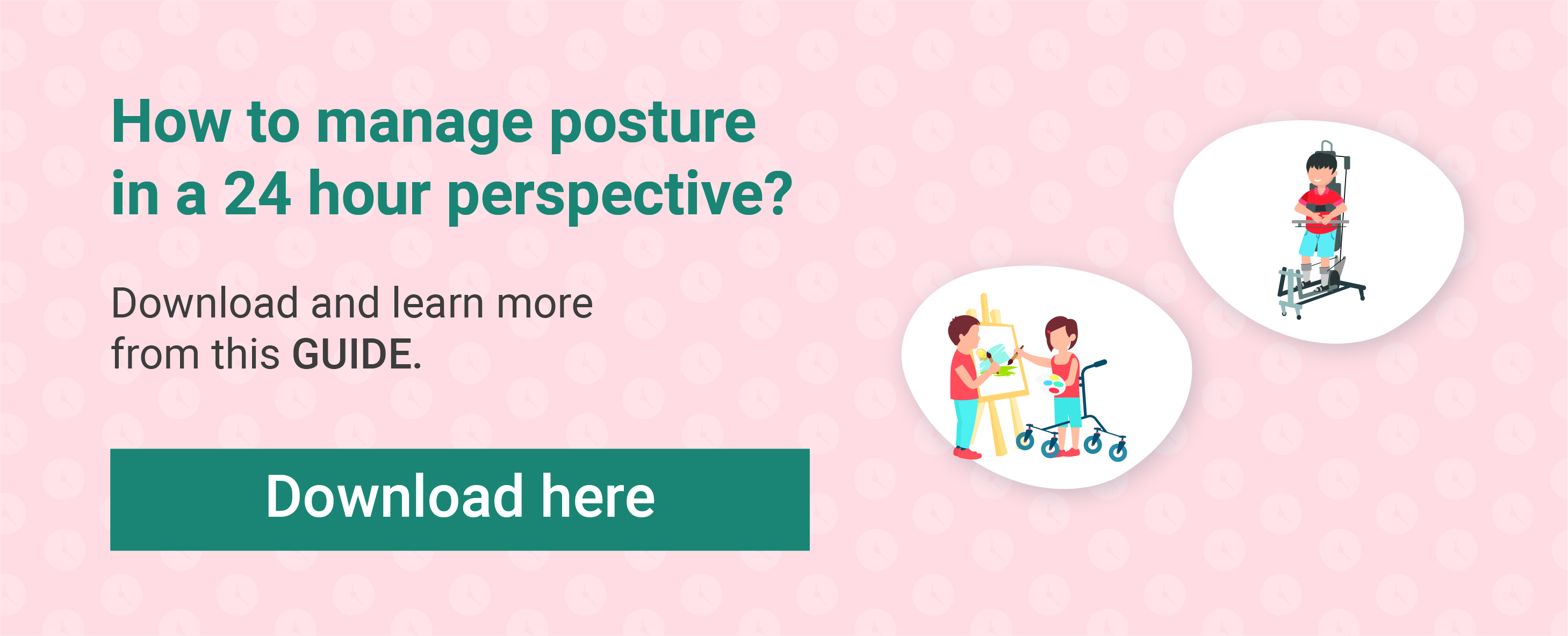How the dynamic stander Innowalk gives Alina the much needed activity


When Alina was little she loved to move. She ran more often than she walked, always full speed ahead. Then at the age of 7 she was diagnosed with NCL, a progressive neurodegenerative disease that affects cells in the brain, the retina, the heart and the skeletal muscles. Their world fell apart.
The first symptoms appeared when she was 6, experiencing the loss of almost all vision within 6 months. At that point the journey of trying to compensate for lost functions started.

Today, Alina is a 17-year-old young lady. She has kept her good mood and love of movement, but she has lost her speech and uses a wheelchair for mobility. In an interview with her mother, Nina, she explains what has been important to focus on to make Alina’s life as good as possible.
What is NCL?
Neuronal Ceroid Lipofuscinosis (NCL) is the most common congenital metabolic disease affecting the nervous system. It is a progressive (neurodegenerative) disease that is estimated to affect from 1.3 to 7 per 100,000 children born. As the disease progresses, more and more physical and cognitive functions are lost. Clinically, NCL diseases can be grouped into three main classifications, infantile, late-infantile and juvenile NCL. In the latter group (JNCL), the symptoms most often debut in preschool age with impaired vision. Psychomotor impairment occurs at an early school age, and the children / adolescents are also cognitively impaired. Epilepsy usually starts around the age of ten. Spoken language gradually deteriorates and some completely lose the ability of communicating verbally. Motor impairments come gradually and some become wheelchair dependent during adolescence.
Activity is key to compensate for disability
The family has continued with the physical activities Alina loves, such as swimming and biking. Today she swims 1-2 times a week, she gets massage once a week, and at school she has a sitting exercise bike. However, none of these activities provide whole-body, regular and intensive training.
One day Nina was on Facebook and watched a film that teased her curiosity. - What is this? A cross trainer for people with multi-handicap, who are unable to stand and move themselves? That is utterly fantastic! Too good to be true!, she smiles.
She visited the home page of Made for Movement and read about the dynamic stander. There she discovered that with the product comes a variety of accessories, possible to customise to individual needs. For instance the neck support and fixation gloves. - Then I realised that this assistive device actually could meet Alina’s needs, she explains.
She contacted the sales office in Borås, Sweden to learn how to obtain the dynamic stander. - I was recommended to start the process by contacting our community physiotherapist so she could help organise and apply for a try-out to see if this device was suitable, she tells.
The therapist had not seen the Innowalk before and was also surprised of what it enabled the user to manage. After just 4 weeks the try-out was authorized. This was in March 2020.
The Innowalk dynamic stander has been used every day since
- Now Alina is training in standing for 45-50 minutes per day, and when I share these happy moments on Facebook I get lots of feedback. People are surprised that an assistive device like this exists for people with such complex needs, the mother says.
The Innowalk offers whole-body exercise with weight-bearing, which no other assistive device can give.
– Nina
- The Innowalk takes the load off me, making sure Alina has easy access to exercise at home. My daughter does love to swim, but then we’re dependent on opening hours and travel time which would be impossible to fit into our daily schedule. In addition to being an assistive device for home use, the Innowalk offers whole-body exercise with weight-bearing, which no other assistive device can give, Nina explains.
And while in the Innowalk Alina loves listening to her favourite stories or music - a perfect opportunity to combine these activities.
Read more: Alvin needs help with everything – also being upright and moving
Whole-body movement affects several organs
The specific changes the family has experienced are directly related to Alina’s gastrointestinal function, blood circulation and respiration.
- We observe that Alina’s stomach function has improved a lot. She also used to very easily get cold feet and hands, which is a common challenge for people spending much of their day in a wheelchair. We do see great improvement in blood circulation, after she started using the Innowalk, Nina explains.
Alina used to have a problem with mucus sticking to her lungs. Mucus clearance is essential for respiratory health, and the whole-body movement in the Innowalk has proven to be of great help. Once Alina has increased mucus production interfering with her respiration they let her exercise in the Innowalk. She breaths deeper and it release mucus from her lungs.
Additionally, Alina is regularly followed up by her physician, taking several different tests, for instance measuring heart function. Despite her severe disabilities, all tests are looking really good.
After almost 2 years of use, we cannot see what else could replace the Innowalk with such good results and the quality of life it provides.
– Nina
Read more: Why 24-hour posture care management is key
The development of symptoms has stagnated
Despite having a degenerating disease, the progression of symptoms has stagnated since Alina started using the Innowalk. Nina is convinced that the whole-body movement Alina gets every day has made a tremendous difference.
- Although Alina doesn’t communicate verbally, we can easily see that she is very happy in the Innowalk. She also uses a static stander, which sometimes results in a drop in blood pressure, and you can see that she is not comfortable all the time. So, there is a big difference between how she handles static and dynamic standing. I think that much of the satisfaction isn’t just physical for Alina. The mental wellbeing of coming up in standing and moving is evident, - being in activity which was so important for Alina before the disease took away her ability to move herself, Nina concludes.
Meet Nina and Alina is this video.
Read more: 12 frequently asked questions about the dynamic stander Innowalk

Resources

The author worked as Head of Marketing for Made for Movement for 7 years before she pursued other adventures in her own company. Trine Roald has over 20 years of international experience within a variety of industries. As Head of Marketing for Made for Movement she was passionate about communicating stories and know-how featuring possibilities for improving the quality of life among people with severe disabilities.
A severe accident during a hockey game resulted in 35-year-old Tobias breaking his neck and becoming paralysed from the armpits down....
A disability entails the loss of, damage to, or deviation from bodily or psychological functions, in the form of mental, physical,...
The Neurological Interdisciplinary Treatment Centre NiB (Neurologisches Interdisziplinäres Behandlungszentrum) is an innovative...
Hear from us from time to time and learn new things